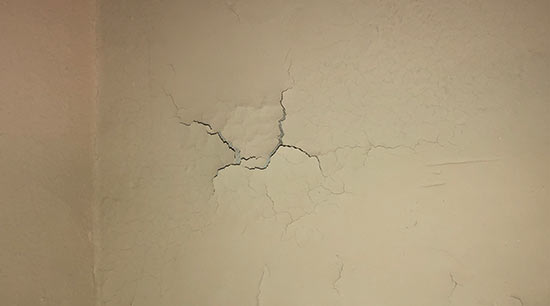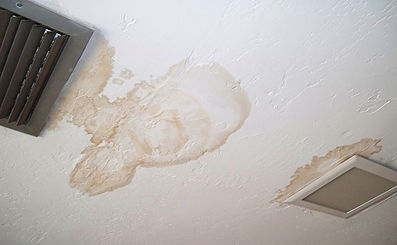How do you feel in relation to Indicators of Water Damage Behind Walls?

Water discolorations on walls are not pleasant to the eyes. Your home needs to lack discolorations on the walls, roof, or floors. That is the excellent state of a home and also its frameworks. Occasionally it appears nearly inevitable to experience water spots on wall surfaces in homes.
Home owners residing in moist areas continuously manage the worry of water discolorations on walls. However that does not have to hold true for you. With precise and also well-shaped details on the sources of water stains and also timely fixing procedures, you will constantly be a step ahead of such occurrences. So, this write-up guarantees to be a helpful guide for you.
3 Typical Sources Of Water Discolorations on Wall Surfaces
Unlike popular belief, water spots on walls do not constantly originate from poor building products. There are numerous root causes of water stains on walls. These include:
Moist
When warm damp air consults with completely dry chilly air, it creates water beads to form on the wall surfaces of buildings. This occurs in bathroom and kitchens when there is heavy steam from cooking or showers. The water droplets can discolor the bordering walls in these parts of your home and infect various other areas.
Damp or condensation impacts the roofing system and also walls of structures. When the wall is damp, it creates an appropriate environment for the growth of fungi as well as microbes.
Poor Drain
This will certainly protect against water from seeping into the walls. This links to excessive wetness that you discover on the walls of your building.
The leading cause of wet walls, in this situation, can be an inadequate drain system. It can additionally result from inadequate monitoring of sewer pipelines that go through the structure.
Pipe Leaks
Most residences have a network of water pipelines within the walls. It always increases the viability of such pipelines, as there is little oxygen within the wall surfaces.
Yet, a drawback to this is that water leakage affects the wall surfaces of the structure as well as causes prevalent damages. A dead giveaway of malfunctioning pipes is the appearance of a water tarnish on the wall.
Pro Tip
A houseplant in your house likewise increases its moisture. If the house is currently humid, you might desire to introduce houseplants with marginal transpiration. An example of suitable houseplants is succulents.
Water Spots on Wall: Fixing Tips
When dealing with water spots, property owners would usually want a fast fix. Yet, they would certainly soon understand this is detrimental as the water stains persist. Below are a couple of handy suggestions that will certainly assist you in the repair service of water stains on wall surfaces:
Final thought
Although nobody intends to have water stains on walls in their house, it can happen to the very best of us. This post provides you utilize, as you currently recognize just how to manage this accident if it does happen.
It is always best to recruit expert services to assist take care of the problems in your house.
Often it appears virtually inevitable to experience water stains on walls in homes.
Contrary to preferred idea, water discolorations on wall surfaces do not constantly stem from inadequate structure products. There are a number of causes of water spots on wall surfaces. The water beads can tarnish the bordering wall surfaces in these components of your residence and also spread to various other locations.
Here are a few useful pointers that will certainly lead you in the repair work of water spots on walls:
CHECKING FOR WATER DAMAGE
Water damage can be costly, and it may begin before you even notice the first signs of trouble. Water damage can cause mold and mildew in your walls and floors, which can create an abundance of health concerns for your family. It can also lead to costly repairs of various appliances and general home fixtures. To avoid the pricey consequences of water damage, here are Warner Service’s top 5 places you should check:
The walls – The easiest place to spot the beginnings of water damage is on the walls and ceilings of your home. If water damage is present, there will most likely be water stains, especially around the windows and doorframes, and/or cracks in the drywall. If a stain looks unusual (discolored to brown, black or gray, raised texture), has a swollen appearance or is soft to the touch, contact a professional immediately. The pipes – To avoid water damage, consistently check the pipes in your kitchen (especially the dishwasher and ice maker), bathrooms, laundry room (specifically washing machines) and basement for corrosion, leaks and water stains. Pay special attention to where the pipes connect in your home and the location of caulking around the bathroom fixtures, including toilets, sinks, showers and tubs. Missing or loose caulking and grout could be signs of leaking water. This seepage can also quickly cause mold and rust, so double check your water heater and tank for wet spots on the floor. The floor – Water damage is very easy to spot on the floor. Look for any warping or buckling of the material, especially in the basement. If your home has wood flooring, look for bright white or dark stains. If your home has carpeting, keep it dry and clean. A damp carpet that smells of mold could cause water damage and health problems. To avoid this, consider installing floor pans under your appliances to help prevent damages from small, slow and undetected leaks. The basement and attic – If your basement or attic smells odd check for mold and mildew around the area, especially the valley where the roof meets. While you are inspecting those areas, check for wall cracks, floor stains, rust and dampness in the insulation. If you live in a colder and/or rainier climate, perform routine checks for water damage from melting snow or ice and rain. The exterior – Check the roof for damaged flashing and missing, cracked or curled shingles. There should also be no standing water anywhere outside your home. This could be caused by puddles, leaky rain gutters or hoses, poor drainage, or short gutter spouts. Invest in a sump pump system or water flow monitoring system, and perform routine maintenance on these outdoor appliances to avoid indoor water damage.

I'm certainly very involved in How to Find and Repair Water Leaking in the Wall and I am hoping you appreciated the blog entry. I beg you take the opportunity to distribute this blog posting if you liked it. Thank you for going through it.
Quality first, dial!